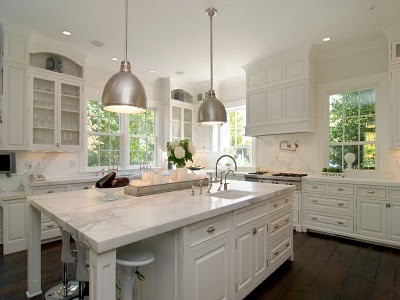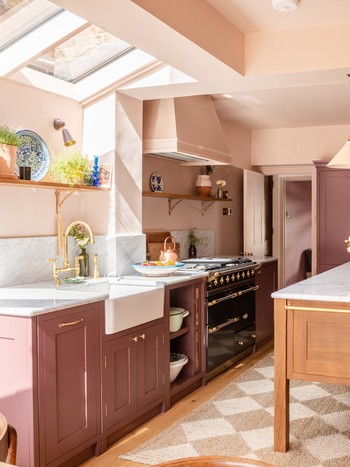Include Beauty and Character to Your Room with Legs For Kitchen Island Creations
Include Beauty and Character to Your Room with Legs For Kitchen Island Creations
Blog Article
Key Factors To Consider for Locating the most effective Legs For Kitchen Island for Your Layout
When picking the suitable legs for your kitchen area island, several vital factors to consider enter play that can significantly influence both performance and appearances. The option of height, product, and style need to align with your total kitchen area layout to make sure a harmonious appearance. Additionally, security and maintenance demands are essential for long-lasting usage and ease of treatment. Understanding these variables can enhance your cooking area's practicality and aesthetic appeal, however the subtleties of each consideration can commonly be neglected. What ramifications might these choices have on your cooking area's overall environment?
Determine Your Design Choice
Establishing your style preference is essential when choosing the excellent legs for your kitchen area island. The legs of your cooking area island not just offer a functional function however likewise contribute substantially to the total visual of the room. Consequently, identifying your layout style-- be it modern-day, rustic, traditional, or industrial-- is vital.
For a modern kitchen, consider sleek, minimalistic legs that enhance open areas and clean lines. In contrast, a rustic setting might benefit from more durable, farmhouse-style legs constructed from recovered materials. Conventional kitchens often prefer transformed or elaborate legs, which can add a touch of style and refinement. On the other hand, an industrial aesthetic could require metal legs that stress a raw, incomplete look.
Additionally, think about the elevation and percentage of the legs in relation to the island's surface. Eventually, your style choice will certainly affect not just the selection of legs but also the overall harmony of your kitchen area's style.
Select the Right Product
Picking the appropriate product for your kitchen island legs is pivotal in ensuring both durability and aesthetic appeal. Various materials provide distinct advantages, and the choice typically shows your style preferences and functional requirements.
Timber is a popular choice, providing heat and convenience. It can be tarnished or repainted to match your cooking area decoration, making it versatile to different styles, from rustic to contemporary. However, timber might need routine maintenance to preserve its look and honesty.

If you look for a distinct touch, take into consideration acrylic or glass materials. They can produce an impression of space and lightness in your cooking area, making them an outstanding option for smaller sized areas - Legs For Kitchen Island. Nevertheless, these alternatives may require cautious handling and upkeep to stay clear of scratches.
Ultimately, the material you select must straighten with your kitchen's overall style, making sure that the legs offer both functional and decorative objectives.
Take Into Consideration Height and Proportions
When developing a kitchen area island, elevation and percentages play a vital role in guaranteeing performance and comfort. The standard height for a kitchen island typically ranges from 36 to 42 inches, aligning with standard counter elevations or bar elevations, specifically. This dimension is important for balancing with surrounding feceses and kitchen counters, allowing simplicity of use during dish prep work and social interactions.
Additionally, the island's proportions have to enhance the general kitchen area layout. A well-proportioned island should not bewilder the area; rather, it should develop a well balanced aesthetic. Consider the proportion between the island's width and size, ensuring it provides ample surface without crowding the kitchen area. A general standard is to preserve a size of 24 to 48 inches, promoting motion and accessibility.
Additionally, the height of the legs or base can influence the aesthetic charm and functionality. Taller legs might lend a much more modern, ventilated feel, while much shorter ones can stimulate a standard, grounded appearance. Inevitably, very carefully considering elevation and percentages will cause a kitchen island that is both aesthetically appealing and official website functionally effective, enhancing the general layout of the space.
Assess Stability and Resilience
A kitchen area island's legs must not only match its height and percentages but likewise supply ample stability and toughness to support everyday tasks. The legs are essential to the overall performance of the island, as they birth the weight of the countertop and any extra tons, such as devices or food preparation tasks.
When examining security, it is critical to consider the leg style and material. For circumstances, tough steel or strong hardwood legs frequently provide remarkable toughness contrasted to lighter products like crafted timber or plastic. Furthermore, a broader base can improve stability, minimizing the danger of tottering or tipping during use.
Sturdiness is similarly essential; the legs ought to withstand deterioration from daily use. Consider finishes that shield versus scrapes, dents, and moisture, especially in a kitchen setting. Evaluate the top quality of building and construction, such as fastenings and joints, which can significantly influence the legs' long-lasting performance.
Inevitably, investing in well-crafted legs that prioritize security and sturdiness will guarantee your kitchen area island remains a dependable work space for many years to come, boosting your culinary experiences while maintaining visual appeal.
Consider Maintenance and Treatment
Maintenance and treatment are vital considerations for making sure the longevity and efficiency of kitchen island legs. When picking legs, it is necessary to evaluate the products made use of, as different discover this info here choices call for varying degrees of upkeep. Wood legs may need routine refinishing or sealing to stop dampness damage and scratches, while steel legs might need Source routine brightening to maintain their luster and stop corrosion.
Furthermore, the coating used to the legs can influence maintenance requirements. A high-gloss coating may be much easier to tidy but could show finger prints and scrapes quicker than a matte coating. It is advisable to choose materials and surfaces that match your way of living; for instance, if you frequently host events, choose long lasting products that can hold up against wear and tear.
Additionally, think about the cleaning process associated with preserving these legs. Smooth surfaces commonly require marginal effort, while complex designs might gather dirt and gunk, necessitating more labor-intensive cleansing techniques. Legs For Kitchen Island. Inevitably, considering the upkeep and treatment needed for your picked cooking area island legs will not just boost their visual charm yet additionally ensure their practical honesty over time
Conclusion
In conclusion, selecting the ideal legs for a kitchen area island requires mindful factor to consider of various elements, including layout style, product option, maintenance, stability, and elevation. Each aspect plays a vital function in guaranteeing that the legs not just boost the aesthetic allure of the cooking area however also give the needed support and durability for day-to-day use. An educated decision will ultimately add to a functional and aesthetically pleasing kitchen area setting.
The legs of your kitchen area island not only offer a functional objective but additionally contribute dramatically to the general visual of the space.Upkeep and care are important considerations for making certain the durability and efficiency of kitchen island legs. Wood legs may need routine refinishing or sealing to protect against moisture damages and scrapes, while metal legs might require routine brightening to maintain their luster and avoid corrosion.
Ultimately, factoring in the maintenance and treatment needed for your chosen kitchen area island legs will certainly not only improve their visual appeal however likewise guarantee their functional stability over time.

Report this page